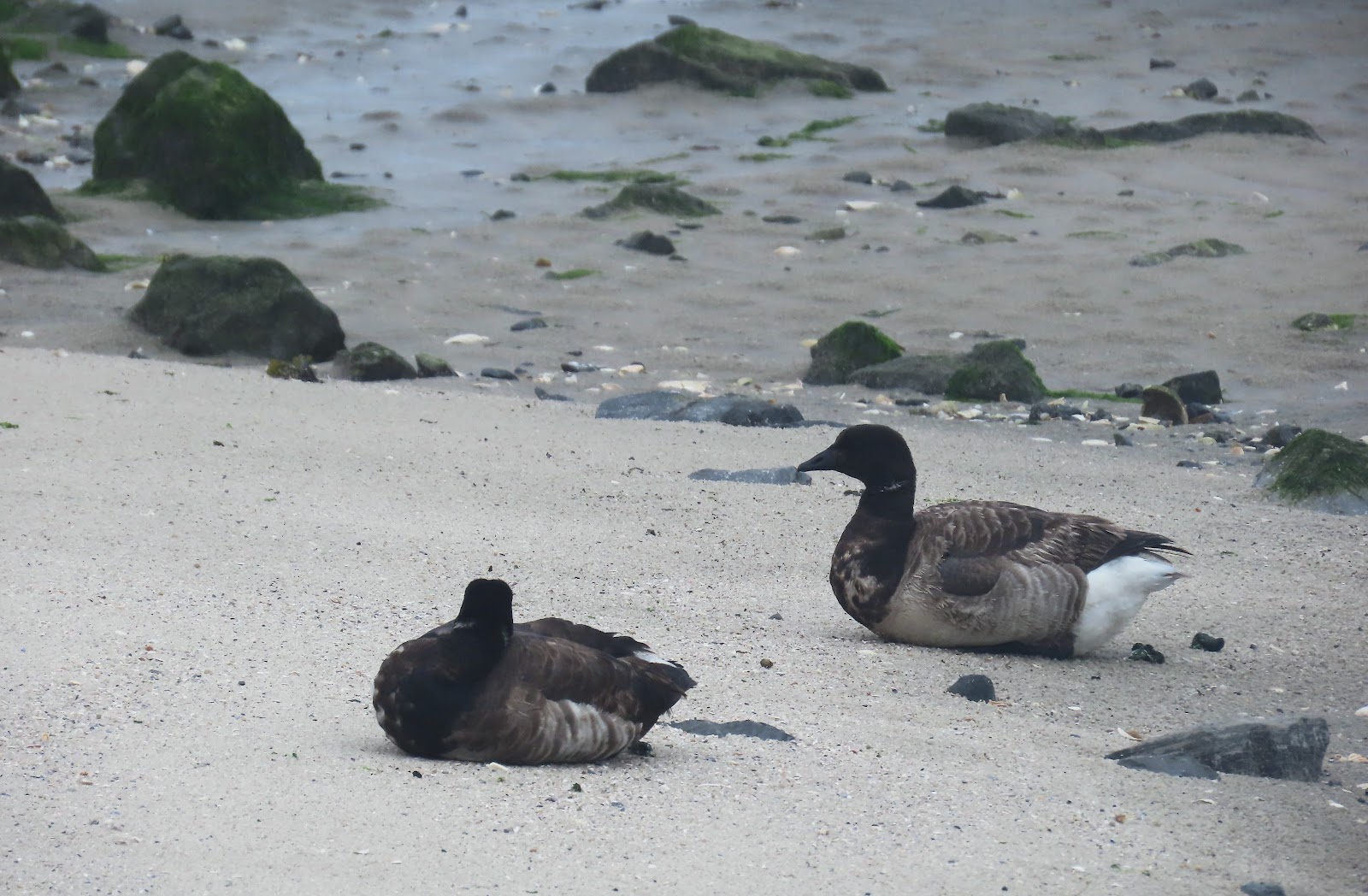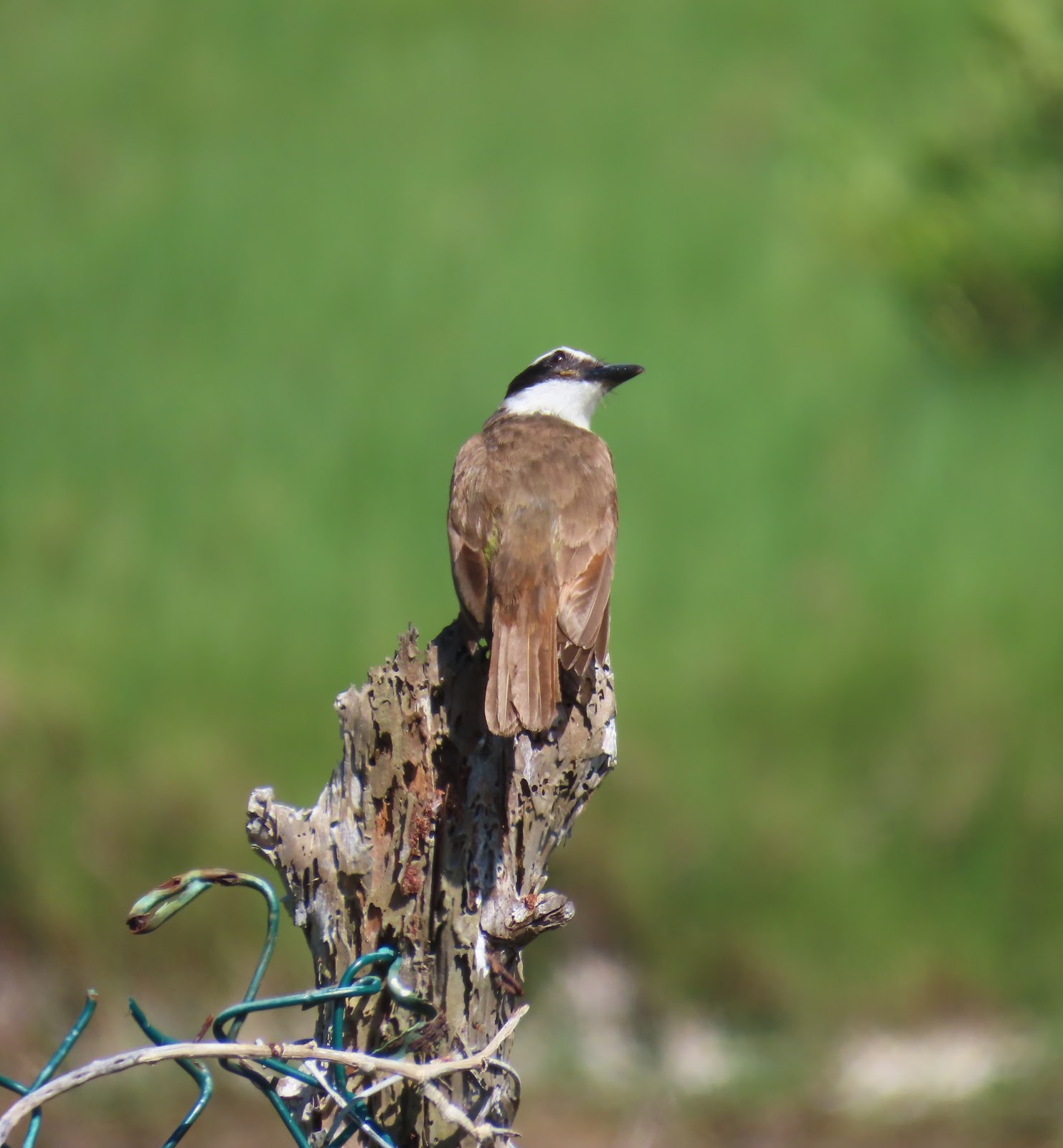 |
| Common Eider, Barnegat Light |
 |
| Red-breasted Merganser, Waretown |
Black-bellied Whistling-Duck Port Royal GC #17 Pond
Brant Barnegat Lighthouse SP
Canada Goose Colliers Mills WMA
Mute Swan Brig
Wood Duck Whitesbog
Blue-winged Teal Brig
Mallard Colliers Mills WMA
American Black Duck Whitesbog
Green-winged Teal Brig
Common Eider Island Beach SP
Surf Scoter Island Beach SP
Black Scoter Island Beach SP
Red-breasted Merganser Waretown
Ruddy Duck Brig
Wild Turkey 35 Sunset Rd
Rock Pigeon Wawa Forked River
Mourning Dove Colliers Mills WMA
Yellow-billed Cuckoo Double Trouble SP
Common Nighthawk 35 Sunset Rd
Eastern Whip-poor-will 35 Sunset Rd
Chimney Swift Whitesbog
Ruby-throated Hummingbird Island Beach SP
Clapper Rail Great Bay Blvd
Common Gallinule Spittal Pond NR
American Coot Airport Pond
American Avocet Brig
American Oystercatcher Great Bay Blvd
Black-bellied Plover Brig
American Golden-Plover Brig
Killdeer Whitesbog
Semipalmated Plover Great Bay Blvd
Piping Plover Island Beach SP
Short-billed Dowitcher Brig
Lesser Yellowlegs Brig
Willet Great Bay Blvd
Greater Yellowlegs Brig
Ruddy Turnstone Great Bay Blvd
Sanderling Island Beach SP
Least Sandpiper Great Bay Blvd
Semipalmated Sandpiper Great Bay Blvd
Laughing Gull Wawa Rt 70 & CR 530
American Herring Gull Great Bay Blvd
Great Black-backed Gull Great Bay Blvd
Lesser Black-backed Gull Port Royal GC #17 Pond
Black Skimmer Great Bay Blvd
Least Tern Great Bay Blvd
Gull-billed Tern Brig
Caspian Tern Brig
Forster's Tern Holly Lake
Common Tern Great Bay Blvd
Roseate Tern Barnegat Lighthouse SP
Royal Tern Island Beach SP
White-tailed Tropicbird Dockyard
Common Loon Island Beach SP
Double-crested Cormorant Great Bay Blvd
White Ibis Waretown
Glossy Ibis Great Bay Blvd
Least Bittern Brig
Yellow-crowned Night Heron Front Street, Hamilton BM
Black-crowned Night Heron Great Bay Blvd
Little Blue Heron Island Beach SP
Tricolored Heron Island Beach SP
Snowy Egret Holly Lake
Green Heron Great Bay Blvd
Great Egret Colliers Mills WMA
Great Blue Heron Colliers Mills WMA
American White Pelican Brig
Brown Pelican Island Beach SP
Turkey Vulture Whitesbog
Osprey Great Bay Blvd
Bald Eagle Brig
Red-tailed Hawk Colliers Mills WMA
Red-headed Woodpecker Colliers Mills WMA
Red-bellied Woodpecker Colliers Mills WMA
Downy Woodpecker 35 Sunset Rd
Hairy Woodpecker Whitesbog
Northern Flicker Colliers Mills WMA
Eastern Wood-Pewee Colliers Mills WMA
Acadian Flycatcher Beach Ave
Willow Flycatcher Great Bay Blvd
Eastern Phoebe Double Trouble SP
Great Crested Flycatcher Colliers Mills WMA
Great Kiskadee Dockyard
Eastern Kingbird Colliers Mills WMA
White-eyed Vireo Colliers Mills WMA
Warbling Vireo Colliers Mills WMA
Red-eyed Vireo Colliers Mills WMA
Blue Jay 35 Sunset Rd
American Crow 35 Sunset Rd
Fish Crow 35 Sunset Rd
Common Raven Brig
Carolina Chickadee Colliers Mills WMA
Tufted Titmouse 35 Sunset Rd
Bank Swallow Reeves Bogs
Tree Swallow Colliers Mills WMA
Purple Martin Whitesbog
Northern Rough-winged Swallow Double Trouble SP
Barn Swallow Colliers Mills WMA
White-breasted Nuthatch 35 Sunset Rd
Blue-gray Gnatcatcher Colliers Mills WMA
Northern House Wren 35 Sunset Rd
Marsh Wren Brig
Carolina Wren Colliers Mills WMA
European Starling Colliers Mills WMA
Gray Catbird Colliers Mills WMA
Brown Thrasher Island Beach SP
Northern Mockingbird Colliers Mills WMA
Eastern Bluebird Colliers Mills WMA
Veery Double Trouble SP
Wood Thrush Whitesbog
American Robin Colliers Mills WMA
Cedar Waxwing Colliers Mills WMA
House Sparrow Waretown
House Finch 35 Sunset Rd
American Goldfinch Colliers Mills WMA
Grasshopper Sparrow Colliers Mills WMA
Chipping Sparrow Colliers Mills WMA
Field Sparrow Brig
Seaside Sparrow Great Bay Blvd
Saltmarsh Sparrow Brig
Song Sparrow 35 Sunset Rd
Eastern Towhee Colliers Mills WMA
Yellow-breasted Chat Cranberry Bogs
Orchard Oriole Colliers Mills WMA
Baltimore Oriole Cranberry Bogs
Red-winged Blackbird Colliers Mills WMA
Brown-headed Cowbird Colliers Mills WMA
Common Grackle Holly Lake
Boat-tailed Grackle Great Bay Blvd
Ovenbird Colliers Mills WMA
Black-and-white Warbler Colliers Mills WMA
Common Yellowthroat Colliers Mills WMA
Hooded Warbler Double Trouble SP
American Redstart Colliers Mills WMA
Yellow Warbler Colliers Mills WMA
Pine Warbler Colliers Mills WMA
Prairie Warbler Whitesbog
Scarlet Tanager Colliers Mills WMA
Northern Cardinal 35 Sunset Rd
Blue Grosbeak Brig
Indigo Bunting Brig

















